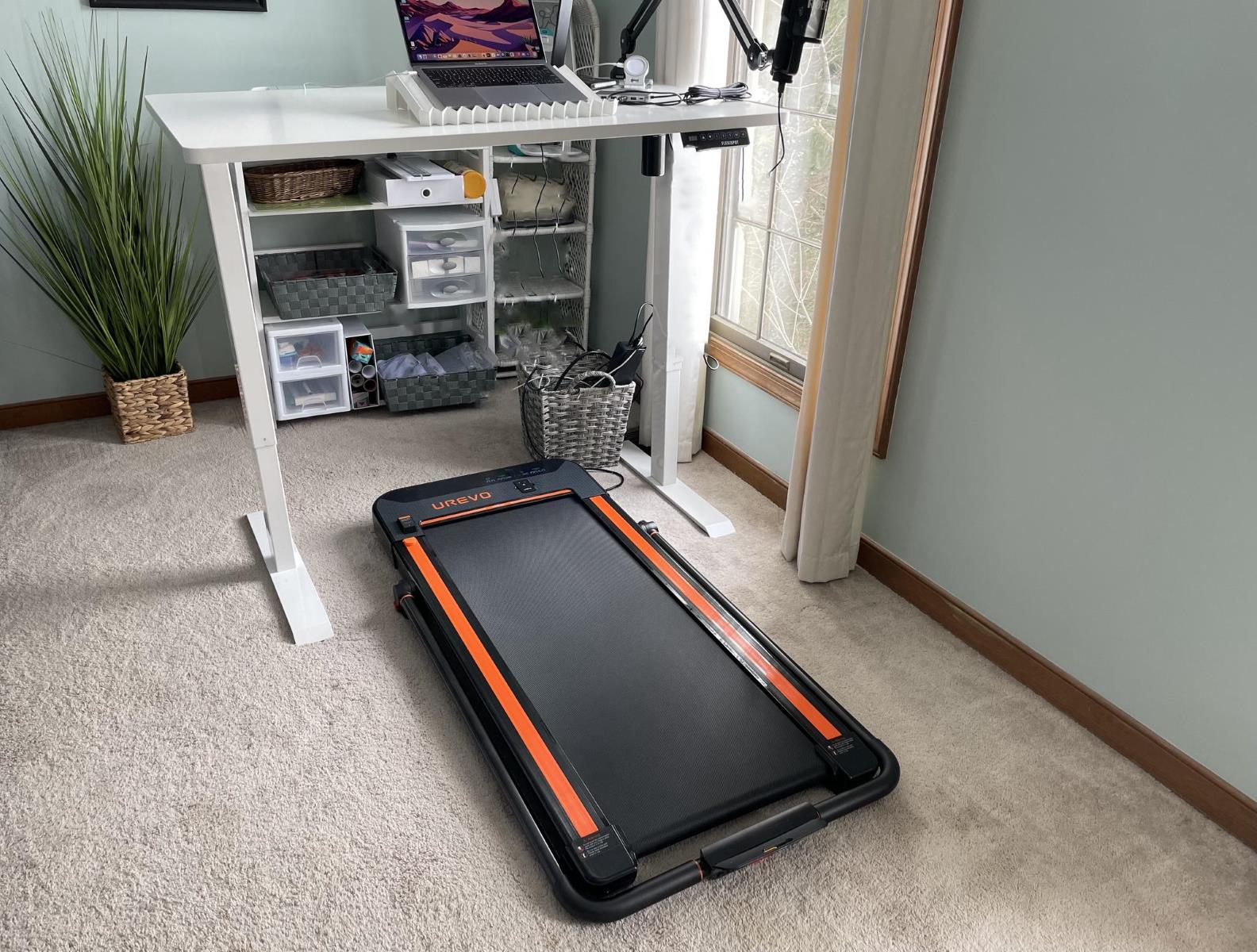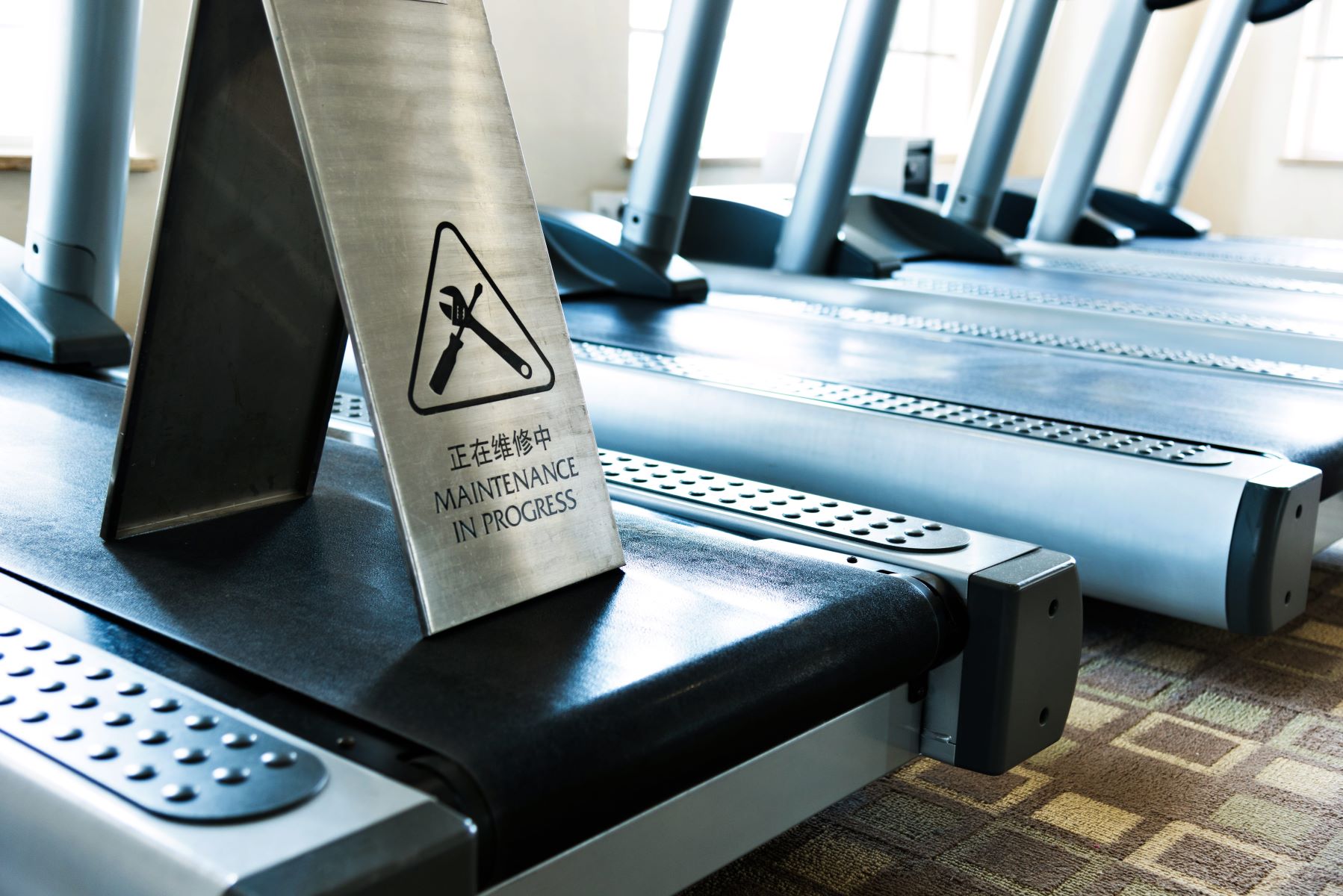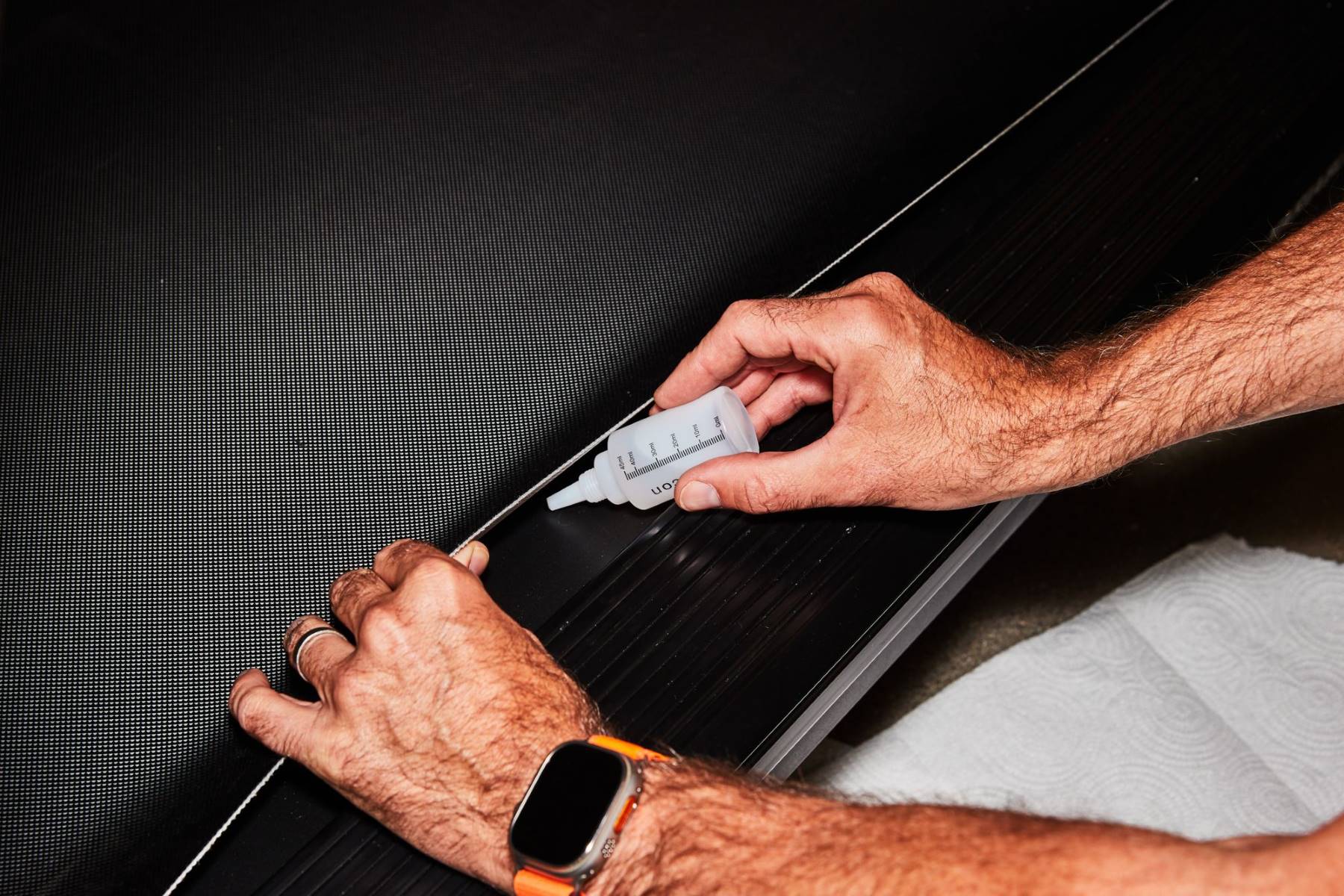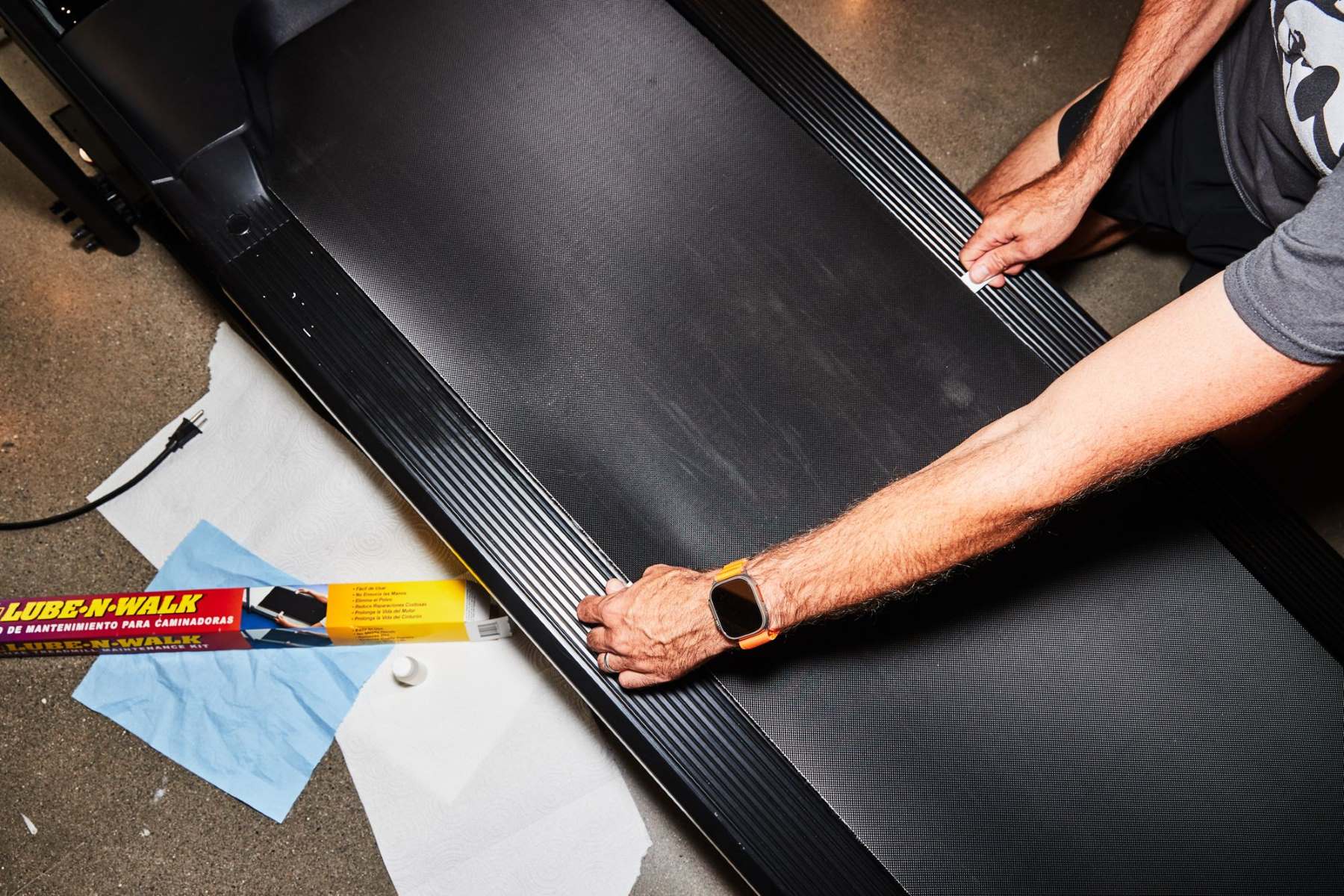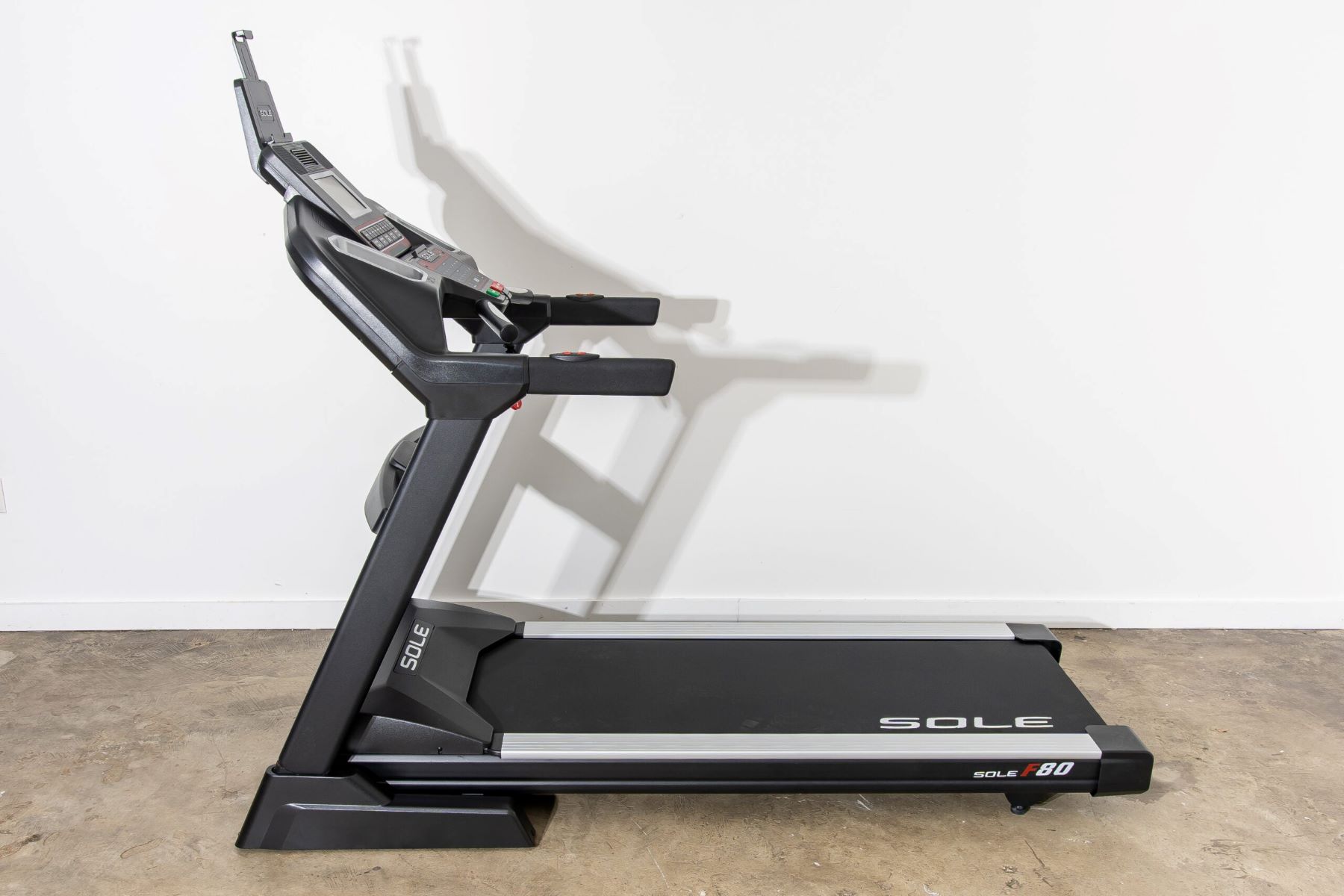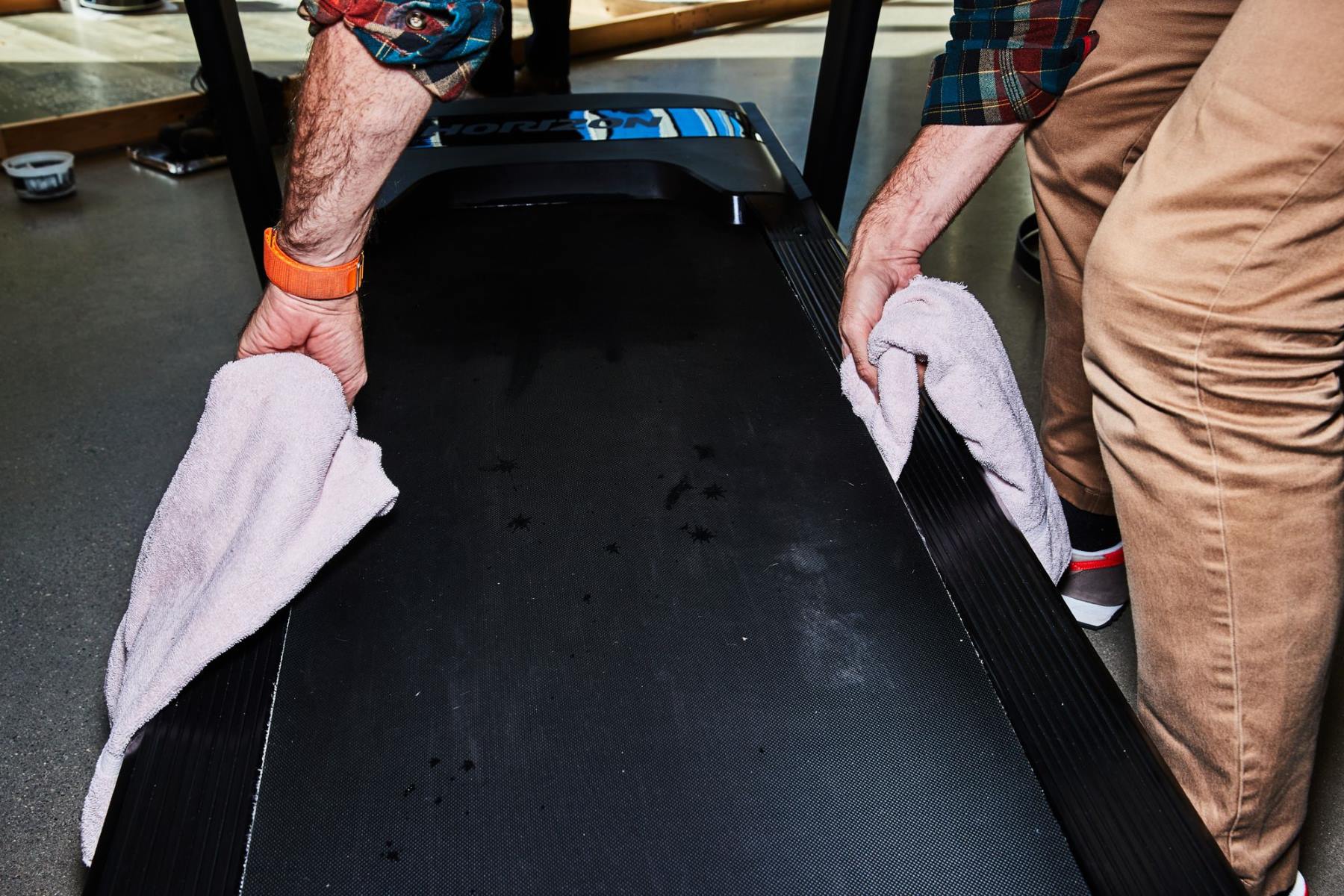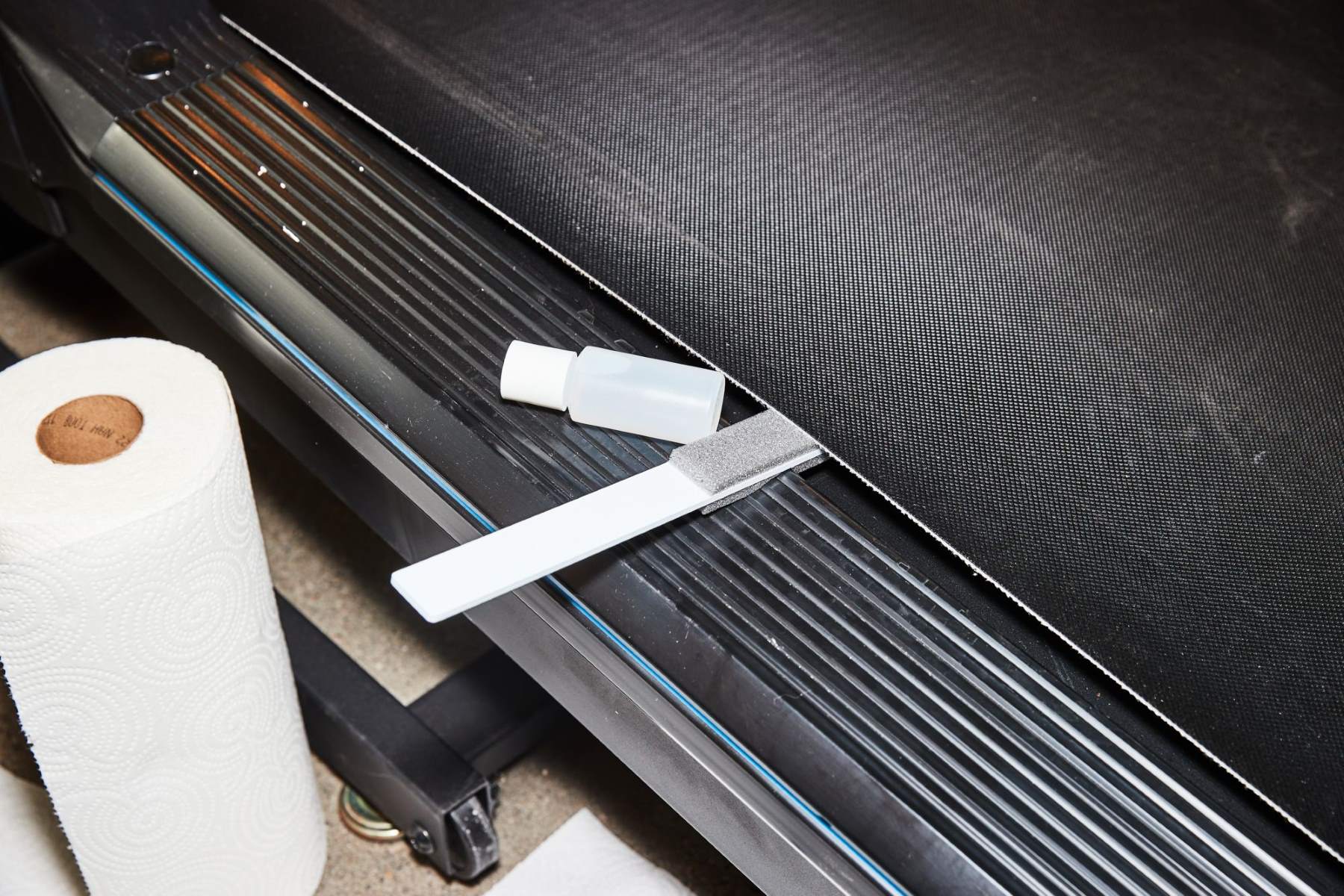

Featured
What To Use For Treadmill Lubricant
Modified: August 19, 2023
Looking for the best treadmill lubricant? Discover our featured product recommendations to keep your treadmill running smoothly and efficiently.
Introduction
Welcome to our comprehensive guide on what to use for treadmill lubricant. If you own a treadmill, you may have heard about the importance of regular lubrication. Treadmill lubrication is a vital maintenance task to ensure the smooth functioning and longevity of your machine.
Imagine running on a squeaky and creaky treadmill that feels rough and uneven. Not only is it annoying, but it can also lead to increased wear and tear on the components of your treadmill, potentially leading to costly repairs down the line.
In this article, we will explore the different types of lubricants available for treadmills, the correct way to lubricate your treadmill, and common mistakes to avoid. Whether you are a beginner or an experienced treadmill user, this guide will provide you with the knowledge you need to keep your treadmill in optimal condition.
So, why is treadmill lubrication so important? Running or walking on a treadmill creates friction between the moving parts. Over time, this friction can cause the components to wear down, resulting in increased noise, decreased performance, and potential damage to the motor and belt. By lubricating your treadmill regularly, you can reduce the friction and ensure smooth operation.
Now, let’s take a closer look at the different types of lubricants available for treadmills. From silicone-based lubricants to petroleum-based options, we’ll discuss the pros and cons of each so that you can make an informed decision on which one to choose for your treadmill lubrication needs.
In the next section, we’ll dive deep into silicone lubricants – one of the most popular choices for treadmill lubrication. We’ll explore their benefits, how to apply them, and any drawbacks to be aware of. So, let’s get started!
Why is treadmill lubrication important?
Treadmill lubrication is an essential aspect of treadmill maintenance that should not be overlooked. Regular lubrication ensures the smooth operation of your treadmill and helps to prolong its lifespan. Here’s why treadmill lubrication is so important:
1. Reduces friction: The moving parts of a treadmill, such as the belt and motor, generate friction during use. This friction can cause wear and tear on the components and lead to increased noise, decreased performance, and potential damage. Lubricating your treadmill reduces friction, allowing the parts to move smoothly and reducing the strain on the motor and other components.
2. Enhances performance: A well-lubricated treadmill operates more efficiently. When the belt glides effortlessly, you can enjoy a smoother and more comfortable workout experience. Lubrication also helps to prevent the belt from slipping, which is not only frustrating but can also be unsafe.
3. Extends treadmill lifespan: Investing in a treadmill is a long-term commitment, and proper maintenance is crucial to maximize its lifespan. Regular lubrication helps to prevent premature wear and tear on the components, allowing your treadmill to last for years without needing costly repairs or replacements.
4. Reduces noise: A squeaky treadmill can be a major distraction and disrupt your workout routine. Lubrication significantly reduces friction and eliminates those annoying squeaks and creaks, creating a quieter environment for your workouts.
5. Ensures safety: A properly lubricated treadmill provides a safer workout environment. When the belt moves smoothly, there is less risk of tripping or slipping. Lubrication also helps to prevent the belt from wearing down or becoming brittle, reducing the chance for accidents or injuries.
Now that we understand the importance of treadmill lubrication, let’s move on to exploring the different types of lubricants available for treadmills. Each type has its own advantages and considerations, so it’s important to choose the right lubricant for your specific treadmill model and usage patterns.
Types of lubricants for treadmills
When it comes to lubricating your treadmill, there are several types of lubricants to choose from. Each type of lubricant has its own unique properties and benefits. Here are the most common types of lubricants for treadmills:
1. Silicone lubricants: Silicone-based lubricants are one of the most popular choices for treadmill lubrication. They are known for their excellent lubricating properties, durability, and resistance to heat and moisture. Silicone lubricants are typically available in spray or liquid form and are easy to apply. They provide a smooth and quiet operation, reduce friction, and help prolong the life of your treadmill’s components. However, be cautious when applying silicone lubricants as they can be slippery and may require special cleaning to remove any excess residue.
2. Petroleum-based lubricants: Petroleum-based lubricants, also known as petroleum jelly or paraffin wax, are another option for treadmill lubrication. They have good lubricating properties and are generally more affordable than silicone lubricants. Petroleum-based lubricants can also help prevent the belt from sticking or slipping. However, they may attract more dust and debris, which can affect the performance of your treadmill over time. It’s important to use petroleum-based lubricants sparingly and apply them evenly to avoid any build-up.
3. Natural lubricants: Some treadmill users prefer using natural lubricants as an alternative to silicone or petroleum-based options. These include products such as coconut oil or vegetable oil. Natural lubricants can be effective in reducing friction and providing temporary lubrication. However, they may not offer the same long-lasting benefits as silicone or petroleum-based lubricants. Additionally, natural lubricants may have a shorter shelf life and require more frequent applications. It’s important to note that certain natural lubricants may not be compatible with all treadmill models, so it’s essential to check your treadmill’s user manual or consult with the manufacturer before using them.
Each type of lubricant has its advantages and considerations, so it’s important to choose the one that is best suited for your treadmill’s specific requirements. Next, we’ll delve deeper into silicone lubricants, providing a detailed guide on how to properly apply them to your treadmill for optimal performance.
Silicone lubricants
Silicone lubricants are widely used for treadmill lubrication due to their excellent lubricating properties and resistance to heat and moisture. Here’s everything you need to know about silicone lubricants for your treadmill:
Benefits of silicone lubricants:
– Superior lubrication: Silicone lubricants provide a smooth and friction-free surface, allowing the treadmill belt to glide effortlessly. This not only enhances the performance of your treadmill but also reduces wear and tear on the components.
– Long-lasting: Silicone lubricants have a longer lifespan compared to other types of lubricants. They don’t evaporate quickly and can maintain their lubricating properties over an extended period, reducing the frequency of reapplication.
– Moisture protection: Silicone lubricants have moisture-resistant properties, helping to protect your treadmill from potential damage caused by sweat or humidity.
– Heat resistance: Silicone lubricants can withstand high temperatures generated during intense workouts, ensuring optimal performance even under rigorous conditions.
How to apply silicone lubricants to your treadmill:
1. Clean the treadmill: Before applying any lubricant, make sure to clean the treadmill thoroughly. Remove any debris, dust, or dirt from the belt and the surrounding areas to ensure a clean surface for lubrication.
2. Check the user manual: Refer to your treadmill’s user manual for specific instructions regarding lubrication. Some treadmills may have a specific type or brand of silicone lubricant recommended by the manufacturer.
3. Apply the lubricant: Depending on the type of silicone lubricant you have (spray or liquid), follow the instructions on the packaging. Generally, you will need to spray or evenly distribute the lubricant along the center of the belt’s underside. Use a clean cloth or applicator to spread the lubricant across the entire width of the belt, ensuring a thin and even coating.
4. Let it absorb: Allow the lubricant to absorb into the belt for a few minutes. This will ensure that it penetrates the belt fibers and provides effective lubrication.
5. Test the belt: Start the treadmill at a slow speed and observe the belt’s movement. It should glide smoothly without any hesitation or noise. If there are any issues, adjust the belt tension or reapply the lubricant as needed.
Remember, each treadmill model may have specific lubrication requirements, so always refer to your user manual for the manufacturer’s recommendations.
While silicone lubricants offer numerous benefits, there are a few precautions to keep in mind:
– Avoid over-lubrication: Applying too much silicone lubricant can lead to an excess build-up, causing the belt to slip and affecting your workout. Follow the manufacturer’s instructions and apply the appropriate amount for your treadmill.
– Clean any excess residue: After applying the lubricant, use a clean cloth to wipe off any excess residue on the belt or surrounding areas. This will help prevent dust and debris from sticking to the lubricant.
By properly applying silicone lubricants to your treadmill, you can ensure optimal performance, reduce noise, and extend the lifespan of your machine. Now that you know how to use silicone lubricants for treadmill maintenance, let’s move on to the next section where we’ll discuss the steps for properly lubricating your treadmill.
Petroleum-based lubricants
Petroleum-based lubricants, such as petroleum jelly or paraffin wax, are a popular choice for treadmill lubrication. These lubricants offer their own set of benefits and considerations. Let’s dive into the details of petroleum-based lubricants for treadmills:
Benefits of petroleum-based lubricants:
– Cost-effective: Petroleum-based lubricants are generally more affordable compared to silicone lubricants, making them an attractive option for budget-conscious treadmill owners.
– Adequate lubrication: Petroleum-based lubricants provide decent lubrication, reducing friction between the belt and the deck. They can help prevent the belt from sticking or slipping during use.
– Protection against moisture: These lubricants can offer some level of moisture protection, guarding against the potential damage caused by sweat or humidity.
Considerations for petroleum-based lubricants:
– Attracts more dust and debris: Petroleum-based lubricants, especially petroleum jelly, tend to attract dust and debris, potentially affecting the performance and lifespan of your treadmill. Regular cleaning and maintenance are essential to prevent the build-up of dirt.
– More frequent reapplication: Unlike silicone lubricants, petroleum-based lubricants may require more frequent reapplication due to their tendency to evaporate or break down over time. It’s important to monitor the performance of your treadmill and apply additional lubrication when necessary.
How to apply petroleum-based lubricants to your treadmill:
1. Clean the treadmill: Before applying any lubricant, ensure that your treadmill is clean and free from debris. Remove any dirt or dust from the belt and surrounding areas.
2. Follow manufacturer’s guidelines: Check your treadmill’s user manual for specific instructions on using petroleum-based lubricants. Some manufacturers may recommend a specific brand or type of lubricant for optimal performance.
3. Apply the lubricant: With petroleum-based lubricants, it’s important to use them sparingly. Apply a small amount of lubricant along the center of the belt’s underside. Use a clean cloth or applicator to spread the lubricant evenly across the entire width of the belt.
4. Wipe off excess residue: After lubricating the treadmill, make sure to wipe off any excess residue from the belt and surrounding areas. This will help prevent the accumulation of dust and debris.
5. Test the belt: Start the treadmill at a slow speed and observe the belt’s movement. It should glide smoothly without any sticking or slipping. If there are any issues, adjust the tension or apply additional lubricant as needed.
Always refer to your treadmill’s user manual for specific instructions and recommendations regarding petroleum-based lubricants.
While petroleum-based lubricants can be effective for treadmill maintenance, it’s important to regularly monitor the performance of your treadmill and clean any build-up of dust or debris. This will ensure optimal operation and extend the lifespan of your machine. In the next section, we will provide a step-by-step guide on how to properly lubricate your treadmill, regardless of the type of lubricant you choose.
Natural lubricants
For those seeking alternatives to silicone or petroleum-based lubricants, natural lubricants can be an option for treadmill maintenance. Natural lubricants include products like coconut oil or vegetable oil. Let’s explore the details of using natural lubricants for treadmills:
Benefits of natural lubricants:
– Non-toxic: Natural lubricants are generally free from harmful chemicals, making them a safer option for those concerned about exposure to synthetic substances.
– Environmentally friendly: Using natural lubricants aligns with eco-conscious lifestyles, as they are derived from renewable and biodegradable sources.
– Temporary lubrication: Natural lubricants can provide temporary lubrication for your treadmill, reducing friction and allowing for a smoother operation during workouts.
Considerations for natural lubricants:
– Shorter durability: Compared to silicone or petroleum-based lubricants, natural lubricants tend to have shorter durability. They may require more frequent reapplication to maintain an adequate level of lubrication.
– Compatibility: Not all natural lubricants may be compatible with every treadmill model. Check your treadmill’s user manual or consult the manufacturer to ensure the compatibility of natural lubricants with your specific treadmill.
How to apply natural lubricants to your treadmill:
1. Clean the treadmill: Prior to applying any lubricant, ensure that your treadmill is clean and free from dust and debris. Wipe the belt and surrounding areas to provide a clean surface for lubrication.
2. Choose a natural lubricant: Select a natural lubricant of your choice, such as coconut oil or vegetable oil. Make sure it is in liquid form, as solid oils may not spread evenly on the treadmill belt.
3. Apply a small amount: Use a clean cloth or applicator to apply a small amount of the natural lubricant to the center of the belt’s underside. Gently spread it across the entire width of the belt, ensuring an even coating.
4. Monitor performance: Start the treadmill at a slow speed and monitor the belt’s movement. It should glide smoothly without any sticking or slipping. If needed, adjust the tension or add more lubricant to achieve optimal performance.
5. Reapply as necessary: Since natural lubricants may have shorter durability, pay attention to the performance of your treadmill. If you notice increased friction or belt issues, it may be time to reapply the natural lubricant.
Remember to consult your treadmill’s user manual or reach out to the manufacturer for specific guidance on using natural lubricants.
While natural lubricants can provide temporary lubrication for your treadmill, it’s important to consider their limitations and monitor the performance of your machine. Regular maintenance and cleaning are essential to ensure optimal operation. In the upcoming section, we will provide a step-by-step guide on how to properly lubricate your treadmill, regardless of the type of lubricant you choose.
How to properly lubricate a treadmill
Properly lubricating your treadmill is essential to ensure smooth operation and extend its lifespan. Whether you choose a silicone lubricant, petroleum-based lubricant, or natural lubricant, here is a step-by-step guide on how to properly lubricate your treadmill:
1. Consult your user manual: Start by reviewing the manufacturer’s guidelines for lubricating your specific treadmill model. The user manual will provide valuable information on the type of lubricant recommended, the frequency of lubrication, and any specific instructions or precautions.
2. Clean the treadmill: Before applying any lubricant, thoroughly clean your treadmill. Remove dust, dirt, and debris from the belt, deck, and other components using a soft cloth or a vacuum cleaner.
3. Check the belt tension: Ensure that the treadmill belt is properly tensioned. A loose or tight belt can affect the lubrication process and the overall performance of the treadmill. Refer to the user manual for instructions on how to adjust the belt tension if necessary.
4. Choose the appropriate lubricant: Select the lubricant that is suitable for your treadmill. Whether it’s a silicone lubricant, petroleum-based lubricant, or natural lubricant, make sure it is recommended by the manufacturer or compatible with your treadmill model.
5. Apply the lubricant: Follow the specific instructions provided by the lubricant manufacturer. Typically, you will either spray or apply the lubricant along the center of the belt’s underside. Use a clean cloth or an applicator to spread the lubricant evenly across the entire width of the belt.
6. Allow the lubricant to absorb: Give the lubricant some time to absorb into the belt. This will ensure that it effectively lubricates the belt and reduces friction. Refer to the manufacturer’s recommendations for the appropriate amount of time to wait.
7. Test the treadmill: Start the treadmill at a slow speed and observe the belt’s movement. It should glide smoothly without any sticking or slipping. If you notice any issues, such as excessive noise or uneven movement, consider adjusting the belt tension or reapplying the lubricant.
8. Regular maintenance: Lubrication is not a one-time task. It is important to establish a regular maintenance routine for your treadmill. Consult the user manual to determine the frequency of lubrication recommended by the manufacturer. Regularly clean your treadmill, check the belt tension, and reapply lubricant as needed.
Remember, each treadmill model may have specific lubrication requirements, so always refer to your user manual and follow the manufacturer’s instructions. Properly lubricating your treadmill will ensure optimal performance and extend the life of your machine, allowing you to enjoy smooth and hassle-free workouts.
Step-by-step guide for lubricating your treadmill
Lubricating your treadmill is a crucial maintenance task that helps to keep it running smoothly and prolong its lifespan. Follow this step-by-step guide to properly lubricate your treadmill:
1. Prepare the treadmill: Before you begin, ensure that your treadmill is turned off and unplugged from the power source. This will prevent any accidents or mishaps during the lubrication process.
2. Clean the treadmill: Using a soft cloth or a vacuum cleaner, remove any dust, dirt, or debris from the belt, deck, and other parts of the treadmill. A clean surface will ensure optimal lubricant adhesion.
3. Refer to the user manual: Consult the user manual that came with your treadmill. It will provide specific instructions on the type of lubricant recommended for your particular model and any other guidelines.
4. Choose the lubricant: Based on the manufacturer’s recommendations, select the appropriate lubricant for your treadmill. Silicone lubricants, petroleum-based lubricants, or natural lubricants are commonly used options. Ensure that the lubricant is specifically designed for treadmills to provide adequate protection and performance.
5. Apply the lubricant: Depending on the type of lubricant you’ve chosen, follow the instructions on the packaging. Generally, you will apply the lubricant directly to the inside surface of the treadmill belt. Apply it along the center of the belt, ensuring an even distribution.
6. Spread the lubricant: Once the lubricant is applied, use a clean, lint-free cloth or an applicator to spread the lubricant evenly across the width of the belt. Ensure that the lubricant is applied uniformly and covers the entire surface of the belt.
7. Allow for absorption: Let the lubricant absorb into the belt for the recommended amount of time, as indicated by the manufacturer. This will allow the lubricant to penetrate the belt material and provide optimal lubrication.
8. Test the treadmill: After the absorption period, start the treadmill at a slow speed and observe the belt’s movement. Verify that it glides smoothly and evenly without any sticking or slipping. If necessary, make adjustments to the belt tension or apply additional lubricant.
9. Regular maintenance schedule: Create a maintenance schedule for your treadmill, including routine lubrication. Consult the user manual for the recommended frequency of lubrication. Regularly clean the treadmill, monitor the belt tension, and reapply lubricant as needed.
Properly lubricating your treadmill is essential for ensuring optimal performance and extending its lifespan. By following this step-by-step guide and adhering to the manufacturer’s recommendations, you will keep your treadmill in excellent working condition, allowing you to enjoy smooth and uninterrupted workouts.
Common mistakes to avoid when lubricating a treadmill
Lubricating your treadmill is an important maintenance task, but it’s crucial to do it correctly to maximize its effectiveness and prevent any potential issues. Here are common mistakes to avoid when lubricating your treadmill:
1. Over-lubrication: Applying too much lubricant can lead to the accumulation of excess lubricant on the belt and other treadmill components. This can result in a slippery belt that affects your workout safety and performance. Follow the manufacturer’s guidelines regarding the appropriate amount of lubricant to use.
2. Using the wrong lubricant: Using a lubricant that is not recommended for your specific treadmill model can lead to poor performance and potential damage. Always consult the user manual or contact the manufacturer to ensure you are using the correct type of lubricant.
3. Neglecting cleaning: Failing to clean your treadmill properly before lubricating it can result in reduced lubricant effectiveness. Dust, dirt, and debris can hinder proper lubrication and lead to premature wear and tear. Clean your treadmill thoroughly, paying attention to the belt, deck, and surrounding areas before applying lubricant.
4. Improper belt tension: Lubricating a treadmill with improper belt tension can compromise its performance. It’s crucial to maintain the correct tension as recommended by the manufacturer. Refer to the user manual to understand how to adjust the belt tension properly.
5. Neglecting regular maintenance: Lubricating your treadmill should be part of a regular maintenance routine. Neglecting other maintenance tasks, such as cleaning, belt alignment, and checking electrical connections, can lead to problems. Ensure that you follow the manufacturer’s instructions for comprehensive maintenance.
6. Not following the recommended lubrication schedule: Each treadmill model has specific lubrication frequency recommendations. Not following the suggested lubrication schedule can result in a lack of lubrication at critical intervals, leading to inadequate performance and increased wear and tear. Refer to the user manual to determine the ideal lubrication schedule for your treadmill.
7. Applying lubricant on a wet or damp belt: Moisture and lubricant don’t mix well. Make sure the treadmill belt is completely dry before applying any lubricant. Lubricating a wet or damp belt can result in ineffective lubrication and potential damage to the treadmill components.
Avoiding these common mistakes will help ensure that your treadmill stays in optimal condition and provides reliable performance. Following the manufacturer’s instructions, regular maintenance, and proper lubrication techniques will help extend the lifespan of your treadmill and provide a smooth and enjoyable workout experience.
Frequently asked questions about treadmill lubricants
When it comes to treadmill maintenance, lubrication is a topic that raises many questions. Here are some frequently asked questions about treadmill lubricants, along with their answers:
1. How often should I lubricate my treadmill?
The frequency of treadmill lubrication depends on the specific model and intensity of use. In general, it is recommended to lubricate your treadmill every three to six months. However, heavy use or certain environments may require more frequent lubrication. Refer to your treadmill’s user manual for the manufacturer’s specific guidelines.
2. Can I use any type of lubricant for my treadmill?
No, it is important to use a lubricant that is specifically designed for treadmills. Common types of lubricants for treadmills include silicone-based lubricants, petroleum-based lubricants, or natural lubricants. Refer to your treadmill’s user manual to determine the recommended type of lubricant for your specific model.
3. Can I use WD-40 or household oils as treadmill lubricants?
No, WD-40 and household oils are not suitable for treadmill lubrication. These products may not provide the necessary lubrication for the components of a treadmill and can cause damage. It is best to use lubricants specifically formulated for treadmill use.
4. Should I apply lubricant on the top or bottom of the belt?
Treadmill lubricant should be applied to the underside, or the deck side, of the belt. This allows the lubricant to penetrate the belt fibers and reduce friction between the belt and the deck, enhancing performance and reducing wear.
5. How much lubricant should I apply?
The amount of lubricant needed varies depending on the treadmill model and the lubricant type. Follow the manufacturer’s guidelines and apply the recommended amount. Applying too little can result in inadequate lubrication, while applying too much can lead to a slippery belt.
6. Do I need to clean the treadmill before lubricating it?
Yes, it is important to clean the treadmill before applying lubricant. Dust, dirt, and debris can hinder the effectiveness of the lubricant. Clean the belt, deck, and surrounding areas using a soft cloth or a vacuum cleaner before lubricating.
7. Can I use different types of lubricants on my treadmill?
It is generally recommended to stick to one type of lubricant for your treadmill. Mixing different types of lubricants can result in ineffective lubrication or potential damage to the treadmill components. If you are switching lubricant types, make sure to clean the belt thoroughly before applying the new lubricant.
8. Can I lubricate my treadmill without professional help?
Lubricating your treadmill is a task that most users can handle themselves. Follow the manufacturer’s guidelines and proper lubrication techniques. However, if you are unsure or uncomfortable performing the task, consult a professional technician for assistance.
Remember, always refer to your treadmill’s user manual for specific instructions and recommendations regarding lubrication. Proper lubrication is crucial for maintaining the performance, safety, and longevity of your treadmill.
Conclusion
Treadmill lubrication is a vital aspect of treadmill maintenance that should not be overlooked. Proper lubrication reduces friction, enhances performance, and extends the lifespan of your treadmill. Whether you choose a silicone lubricant, petroleum-based lubricant, or natural lubricant, it’s important to follow the manufacturer’s guidelines and maintain a regular lubrication schedule.
Silicone lubricants offer excellent lubricating properties, durability, and resistance to heat and moisture. They are widely used and recommended for treadmill lubrication. Petroleum-based lubricants, although more affordable, may attract more dust and require more frequent reapplication. Natural lubricants can provide temporary lubrication but may not offer the same long-lasting benefits as silicone or petroleum-based lubricants. It’s crucial to choose the right lubricant based on your treadmill model and usage patterns.
When lubricating your treadmill, avoid common mistakes like over-lubrication, using the wrong type of lubricant, neglecting cleaning, incorrect belt tension, neglecting regular maintenance, and improper lubrication schedule.
By following a step-by-step process for treadmill lubrication, you can ensure proper application and optimal performance. Consult your treadmill’s user manual for specific instructions, clean the treadmill before lubricating, choose the appropriate lubricant, spread it evenly, allow for absorption, and test the treadmill’s movement.
Frequently asked questions about treadmill lubrication help address common queries. Proper lubrication frequency, recommended lubricant types, application techniques, and the importance of cleaning are clarified.
In conclusion, maintaining your treadmill by regularly lubricating it is crucial for optimal performance, safety, and durability. By adhering to the manufacturer’s guidelines, practicing proper maintenance, and using the correct lubricant, you can enjoy smoother workouts and extend the lifespan of your treadmill. Remember to consult your treadmill’s user manual for specific instructions and reach out to professionals if you are unsure. With proper care, your treadmill will continue to provide a reliable and enjoyable fitness experience for years to come.
